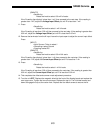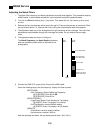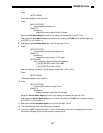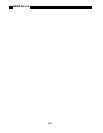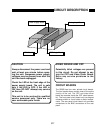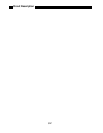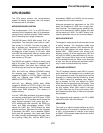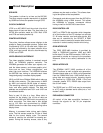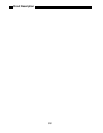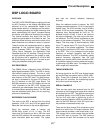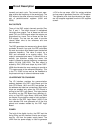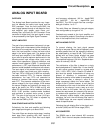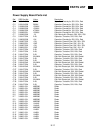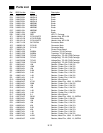
9-5
Circuit Description
The following description refers to the +5V_P
supply but describes the +5V_I supply as well.
The main pass transistor is Q5. The base of this
transistor is controlled so that the emitter will pro-
vide a low impedance source of 5 VDC. The cur-
rent gain of Q5 remains large until the collector-
emitter voltage drops to about 0.4 VDC, hence the
low drop-out voltage of the regulator. The base of
Q5 is driven by the emitter of Q6 which is driven
by the output of the op amp, U3B. By comparing
the output of the regulator to the 5.00V reference,
the op amp maintains the regulator's output at
5.00 VDC. The current output from the regulator is
measured by the 0.1 Ω resistor R10. If the current
exceeds about 2 Amps, then the output of U3A
turns on, pulling the sense input of U3B high,
thereby turning off the regulator's output.
U6, U7 and U18 are the ±12V regulators. U5 is the
-5V regulator. Since these supplies do not need to
be accurate, output sensing is not used.
U9 and U10 provide ±20V sources which are not
referenced to the digital ground (as are all of the
supplies mentioned above). This allows the analog
input board to establish a ground at the signal
input without digital ground noise.
U1 provides power-up and power-down reset.
The 24 VDC brushless fan speed which cools the
heat sink and removes the hot air from the box.
CAUTION: Dangerous voltages are present on
this circuit board whenever the instrument is
attached to an AC power source and the front
panel power switch is "on".
Always disconnect the power cord and wait at
least one minute before opening the unit.
Check the LED at the front edge of the power
supply board. The unit is safe only if the LED is
OFF. If the LED is ON, then DO NOT attempt
any service on the unit.
UNREGULATED POWER SUPPLIES
A power entry module, with RF line filter, is used
to configure the unit for 100, 120, 220, or 240
VAC. The line filter reduces noise from the instru-
ment and reduces the unit's susceptibility to line
voltage noise. R1 is an inrush limiter to limit the
turn on current and TS1 is a thermal switch which
will interrupt the AC line if the heat sink tempera-
ture rises to 50°C.
Bridge rectifiers are used to provide unregulated
DC at ±22V, ±20V and ±8V. Schottky diodes are
used for all supplies to reduce rectifier losses.
Resistors provide a bleed current on all of the
unregulated supply filter capacitors. Because of
the large capacitances in this circuit, the time for
the voltages to bleed to zero is about a minute
after the power is turned off.
POWER SUPPLY REGULATORS
The voltage regulators provide outputs at +5V,
-5V, ±15V, and ±12V. The +5V regulators are
designed to operate with a very low drop-out
voltage.
U2 is a precision 5.00V reference which is used to
set +5V output voltages. This provides very accu-
rate digital power supply outputs.
There are 2 +5V supplies, one to power the CPU
board and disk drive (+5V_P), and one to power
the DSP Logic Board (+5V_I).
POWER SUPPLY BOARD



